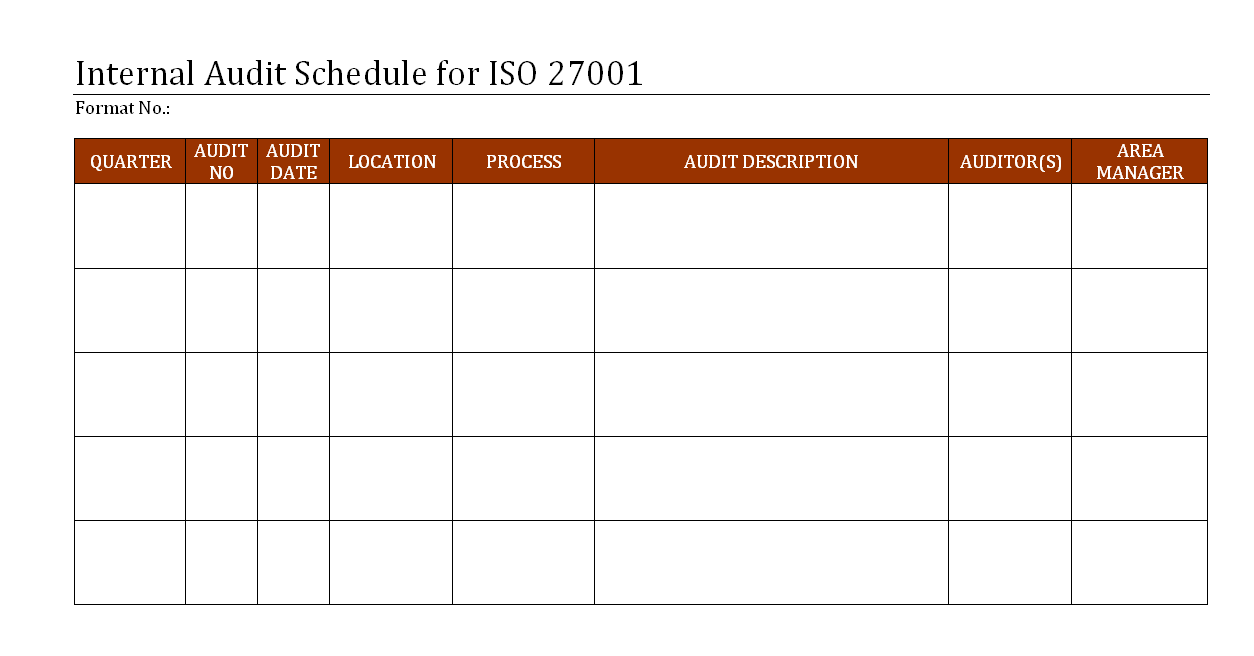

Information Security Policy And Objectives However, it can be incorporated into an information security policy. This document is typically a brief that is prepared at the start of the ISO 27001 implementation. Hence, the next step in planning an ISMS that meets the ISO 27001 standards is to understand these security standards. To ensure it is able to continually meet these benchmarks, the ISO/IEC 27001 standard defines the security standards and improvement criteria. Hence, the controls in an ISMS need to be specified, implemented, monitored, reviewed, and improved to ensure that they integrate with business activities, meet specific information security needs and the organization’s business objectives.Īn efficient, resilient and well-designed ISMS becomes a systematic strategy to enhance information security and fulfill the organization’s business goals and objectives. Data loss, illegal access, and breaches are all issues that the ISMS architecture should be able to handle in the normal course of business.

It is designed to safeguard all types of organizational data and protect against cyber assaults. The organization’s risk acceptance levels need to be designed in the ISMS, to treat and manage risks effectively.Īn Information Security Management System (ISMS) is a collection of policies, procedures, guidelines, related resources and activities that an organization collectively manages in order to secure its information assets. To achieve the highest level of information security, organizations need to begin with a Risk Management process where you identify the controls needed and then implement them using the ISMS. To embark on the journey of creating an Information Security Management System (ISMS) that meets the ISO 27001 standards, we need to begin by understanding the process that precedes it and which influences its design. Our mission is to ensure that your organization is able to fortify your security posture as per the ISO 27001 standards and enhance your competitive advantage in the global marketplace. This is done to ensure that annual audits and recertification is conducted at regular intervals by an independent third-party that is cognizant of the dynamic landscape of cyber threats.Ĭertified ISO Lead Auditors at databrackets support customers to meet both requirements – compliance and/or certification. However, there are several B2B deals that demand certification before a partnership is formalized and information is shared. Their prerogative is to ensure that potential threats remain at bay. In several countries, B2B contracts and financial institutions mandate compliance with ISO 27001 controls and do not mandate getting ISO certified. Organizations have the choice between being compliant and pursuing certification to prove their compliance. However, this may not be required in all cases, countries or businesses.

Pursuing the ISO 27001 Certification is proof of an organization’s dedication to information security. ISO 27001 controls evaluate the strength of an organization’s Information Security Management System (ISMS). The ISO 27001:2013 standard, whether used alone or in conjunction with another management system, such as ISO 9001 (Quality), ISO 22301 (Information Security), ISO 14001 (Environment), or ISO 45001 (Operational Health and Safety), provides guidance and direction for an organization, regardless of size, to implement information security. As a result of its popularity, it is prioritized by businesses who want to secure contracts by proving their ability to protect the information they are entrusted with. While ISO 27001 isn’t a legal mandate, organizations around the world look for B2B partners and vendors who comply with the controls listed under this standard and often demand proof of this through certification.

It is part of the ISO/IEC 27000 family of standards for information security management. It is designed and regulated by the International Organization for Standardization and is officially referred to as ‘ISO/IEC 27001’. ISO 27001 is an all-inclusive, globally respected information security standard.


 0 kommentar(er)
0 kommentar(er)
